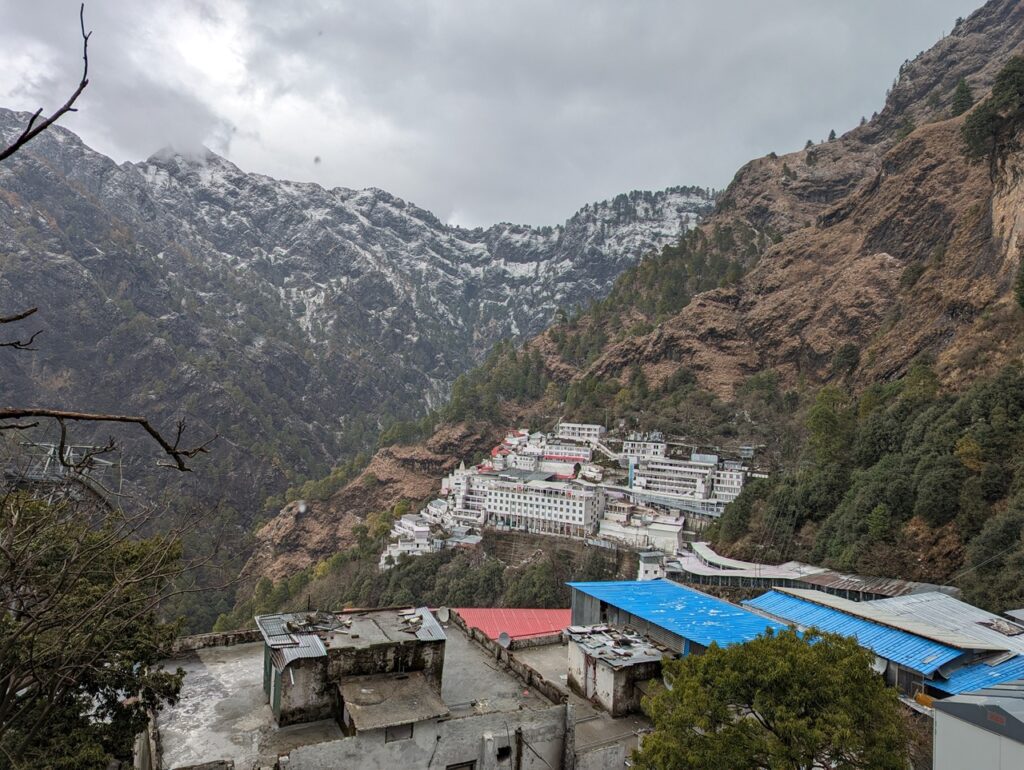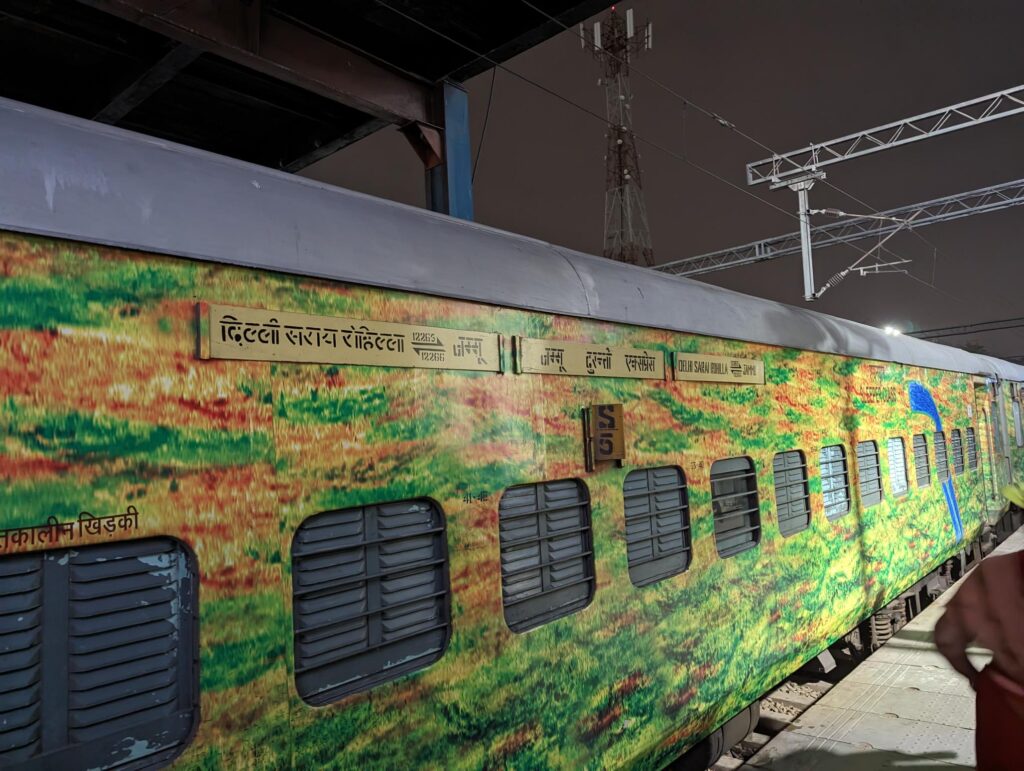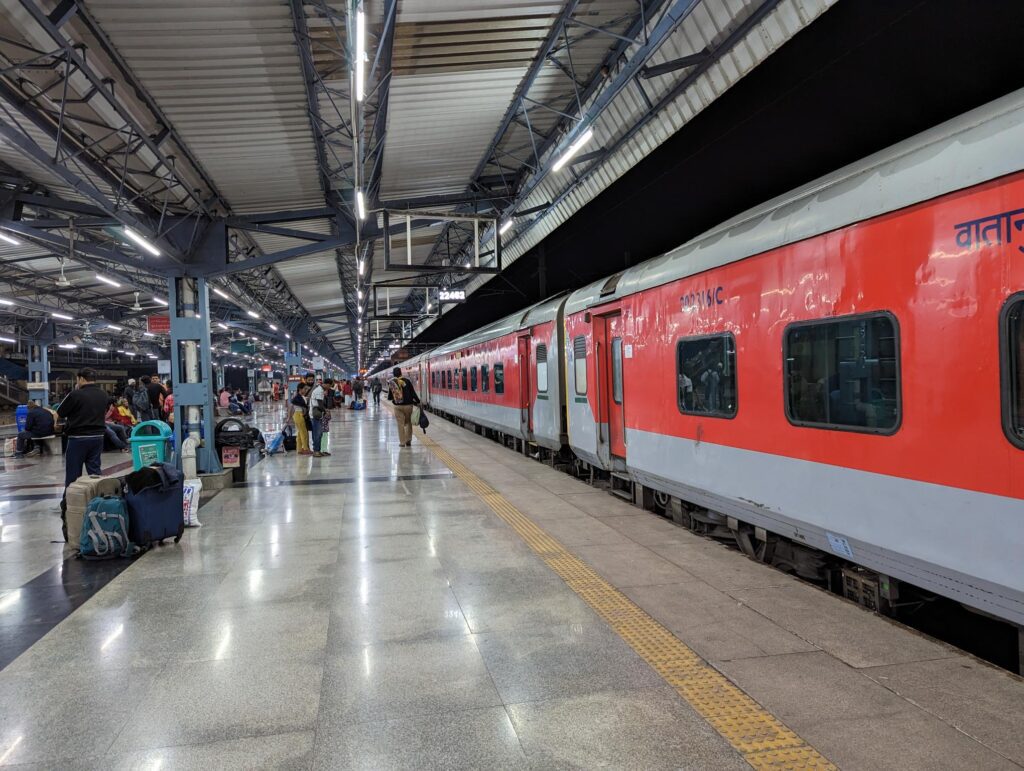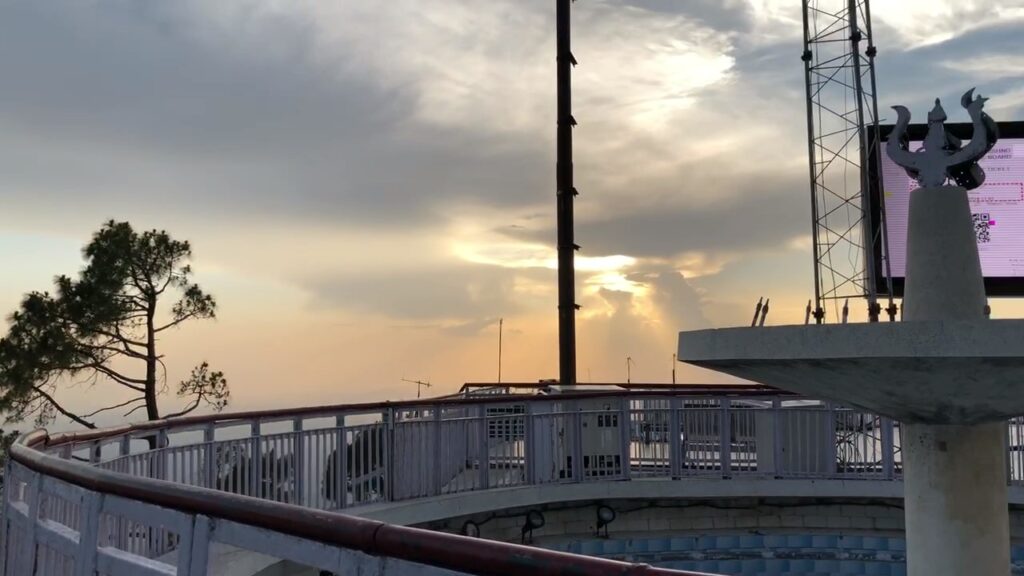
Introduction
Since I started working (about a couple of decades ago), visiting Vaishno Devi has become an annual ritual for me. It is difficult to explain the reason why the place keeps me drawing towards it, but I feel incomplete without going to the place once a year. Except for the couple of years when the world was locked in, I have been to this temple every year. In this blog, I am attempting to pen down the way I do it. This is completely different from what an average person will follow so if you find inspiration and try to follow, please do so only after assessing your physical condition.
Background of the shrine:
For the uninitiated, the shrine is located atop Trikuta hills near the town of Katra in the UT of J&K. The hike to the sanctum is roughly around 14 km from Katra and a further 2 km to the Bhairon temple. So, this is a total of 16 km on one side and 32 km in total for the day. Certainly not an easy task by any stretch of the imagination.
My preparation:
The normal itinerary people follow is that of leaving Delhi Friday night and then returning by Monday morning which gives them get proper rest in between. But I like to do things differently. I either start Friday evening or Saturday evening and return either Sunday morning or Monday morning (depending on when I leave). So, this essentially is a 36-hour journey from start to finish and can be considered a speed hike with minimal rest, which is the reason I advise caution.
Even the train tickets are booked through Tatkal and since I do not stay anywhere there is no need to plan for accommodation. With this kind of punishing schedule, one’s body needs to be of support as well. Believe me, hiking for 32 km and that too at a faster pace is not easy. It knocks the sails out of even a perfectly healthy youngster, but it is even more challenging when you step into the 40s. I start my preparation about a month in advance with running 5k in approx. 30-40 minutes and doing strength exercises with a focus on the legs to make the trip less painful (yes, the pain will still be there no matter what you do).
The management board at Vaishno Devi has done away with the process of getting online yatra parchi so now one has to get the RFID card from either Katra or Jammu. If you want to know more about the process, I have captured everything you need to know as an FAQ, click here to read.
Mode of transport:


For the onward journey from Delhi, I either board the Duronto Express from Sarai Rohilla or the Shri Shakti Express from New Delhi. The former one departs just after 10 PM and the other one close to 8 PM. The decision depends on my schedule since it takes close to a couple of hours to reach the railway station. My preference is the Shri Shakti Express since I can reach Katra directly. Duronto Express drops at Jammu and it takes another couple of hours to get to Katra.
For my return journey, I board the Shri Shakti Express from Katra late at night which drops me in Delhi sometime past 9 AM. By doing this, I get enough time to get back to catch my train.
If you are getting confused, let me clear this. I reach Katra in the morning and board the train again the same night, hence I mentioned that it is a punishing schedule.
Starting my yatra:
The first thing that I do after reaching Katra is to get my RFID card. I get this either from the Katra railway station or the Yatra counter near the bus station.
While travelling, I seldom eat because I simply do not feel the urge to do so. I just like to feel light and only eat what is necessary to keep me on my feet. The entry gate is around a kilometre away from the main Katra Chowk and autos ferry passengers on a shared basis. I have never taken an auto and have always walked to the gate on foot. So, you can add a couple of kilometres more to the distances mentioned above.
The management of the crowd at the entry gate is not up to the mark. There are separate queues for people with luggage or otherwise, but I have never been through without at least waiting for 30 minutes. If I travel by Duronto Express, then every minute becomes crucial as the entry time at the gate almost comes to noon. I usually travel in the months of February or March, which are considered the off-season for the shrine. Imagine the scenario during the rush season or long weekends.
During the yatra:
After avoiding the huge rush of mules just after the entry gate, I begin to gradually get into a rhythm. The key to a stress-free hike is to get into a comfortable pace and maintain it. The first couple of kilometres are a breeze since I am full of energy but then I do consciously make it a point to take it easy. There are important points like Banganga and Charan Paduka within this initial stretch where I halt for a few minutes. These small halts also help me to catch my breath.
Sometimes the weather is not so forgiving, especially towards the end of March. During such days, there is also an added problem of fluid loss. Anyway, one thing that I always do is to drink plenty of water. There are a lot of provisions for refilling en-route so one less problem.
As I proceed further, I reach a point about a kilometre before Ardhkuwari or the mid-point of this yatra. One is the old route which goes through Ardhkuwari and the other one bypasses it. I mostly always give Ardhkuwari a miss since the wait times are too long and do not suit my schedule. At times, one has to wait for even 10-12 hours to get inside. So, I take the new route which bypasses it and the distance from this point is 5.5 Km to Bhawan (main sanctum).
Battery rickshaws are also available from this point which will take you to Bhawan. You can do an online booking or a spot booking depending on the number of people on the day visiting the shrine. I do not waste my time looking for a space and continue walking ahead.
Before the darshan:
As I get closer to the Bhawan, fatigue starts setting in and the pace drops along with frequent breaks. Pain also starts in the legs but then I continue to push on. Finally, I reach the Bhawan premises which houses a few places to stay and some restaurants. The places to stay usually get filled quickly when the advance booking opens for the same. As an average, I take around 3.5 hours from the entry gate to Bhawan.
After a strenuous hike for 3.5 hours, along with being tired, I am also covered with sweat and there is no way that I would go to have darshan without being clean. Since I do not stay at any hotel to take a bath, I have no other option other than to take a bath near the Bhawan itself.
There are a lot of renovations happening in the Bhawan premises so every time I find new things there. Earlier, the public bath was in an open area while this year I could see some signages of a bathroom in a closed building. In any case, you will not find or expect hot or even warm water for taking a bath. The water that comes out of the taps seems to come directly from a glacier or something. I still proceed to have a bath, and it somehow gives me a relaxing feeling once it is complete.
The next order of business is to deposit belongings in a locker. There are few spaces where they provide this service free of cost. I deposit my bags, shoes and any item made of leather. Before that, I purchase a bag of prasad to offer inside the temple. So the only things that I carry with me inside are the prasad and some cash to offer inside as a donation.
Inside the temple:
As I mentioned about the changes in the premises, even the approach to the sanctum has changed a lot. There is a long pathway one has to take to reach the cave area which is the main sanctum. At the start of this way, beautiful sculptures of different forms of goddesses adorn the walls.
The closer that I get to the sanctum, the more the chants of “Jai Mata Di” reverberate in the air. The atmosphere gets electric as I head closer. There are three rock formations inside, known as pindis, which represent three forms of goddess namely Maa Lakshmi, Maa Kali and Maa Saraswati.
I duly offer my prayers inside and then head out with a sense of peace in my heart and mind. The actual time that one gets to spend inside is not that much as there is a big queue behind waiting for their turn.
On the way out, is also Shiv Gufa, a temple inside a cave dedicated to Lord Shiva. There are a lot of stairs to climb down, and although I am quite tired, I still make it a point to visit this cave temple. So, just like that, my visit to the temple is over. After getting out, I spend some time sitting around to relax my tired muscles as well as to reflect on my journey.
Bhairon temple visit:
Before proceeding further, I satisfy my hunger pangs which I have been holding since the previous night. There are a few restaurants on the premises like Sagar Ratna and the local dhabas, so it results in a 30-minute break.
The final stop on this journey is the Bhairon temple, which is a 1.5 or 2 Km uphill climb. This climb is extremely steep, so steep that even the mules struggle to make this journey. The recent development of starting a ropeway to traverse this distance is a boon for people who struggle to cover this distance. I have always found this to be overcrowded and given my tough schedule, I find it easier to do it on foot.
The start of this trail is filled with mules and their owners trying to convince you to do it on these poor animals. I have never done any of the temple hikes on mules and it blows my mind to see healthy people not walking. Anyway, I muster up my final reserves of strength and continue my walk towards the top and after maybe 30 minutes, I reach the topmost point of the hill. There is an open area with some benches to sit on amid excellent views and one can see people taking pictures. Before proceeding to this open area, I first complete my visit to the temple.
I then take a 15-minute break in the open area clicking pictures and stretching my muscles for the gruelling way back.
The way back down:
If anyone thinks that the yatra is over once you are at the top, then you cannot be more wrong. By reaching the top, you have completed only 50% of the journey and in my trekking experiences, the way down is far more difficult.
The initial few kilometres on the way down will feel like bliss coming after an intense climb. That euphoria will soon be over. The toll a descent takes on knee joints is something to be experienced and cannot be described by words. I keep one eye on my watch while going down and try to pace myself appropriately.

The route I take while coming down is from the other side which goes through Sanjhi Chhath (helipad) and Ardhkuwari. This route is steeper than the new one I take while coming up. This means the descent is also steep which is a challenge after the tiring climb. I click some random pictures just to keep myself amused and also to distract myself from the inevitable pain. I continue my descent without any stop till I reach Ardhkuwari.
By the time I reach Ardhkuwari, it is almost evening time. I take a break for 30 minutes or so to rest myself and prepare for the final push-down. Ardhkuwari is a major stop point for devotees so there are multiple restaurants in the area. Depending on my fatigue and hunger, I utilise this break for eating some snacks.
Armed with extra calories and energy, I start my final descent to Katra. The final few kilometres are always the toughest ones and seem never-ending. I drag myself and finally end up at the entry gate. Depending on how much time is still left for my train, I sit for some time on the steps near the gate, to both have a rest and reflect on the journey. Although my journey every year is done at a breakneck speed, I still make it a point to spend some time to reflect on the time spent.
Final Thoughts:
I do know why this annual visit has become a ritual, there could be a multitude of reasons for it but then I do not even think about it. Till the time I am able and capable of doing it, I will keep doing it.
This was just a generalised account of what my annual visit ideally looks like. I might also write specifically about my journey in a particular year so you can be aware of the real challenges that I face. But that will be in another blog, till then do show some love in the form of shares and comments.
Jai Mata Di